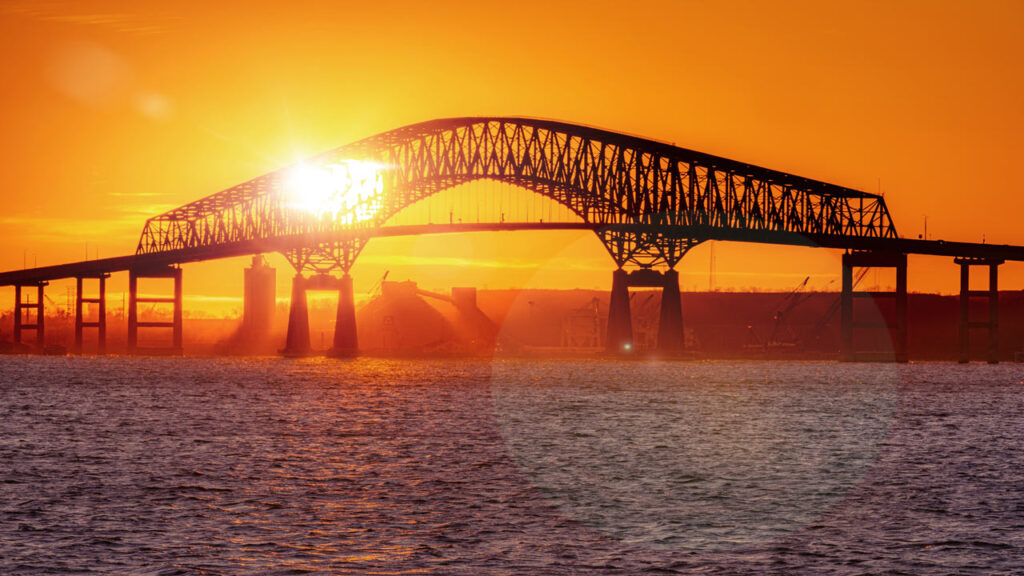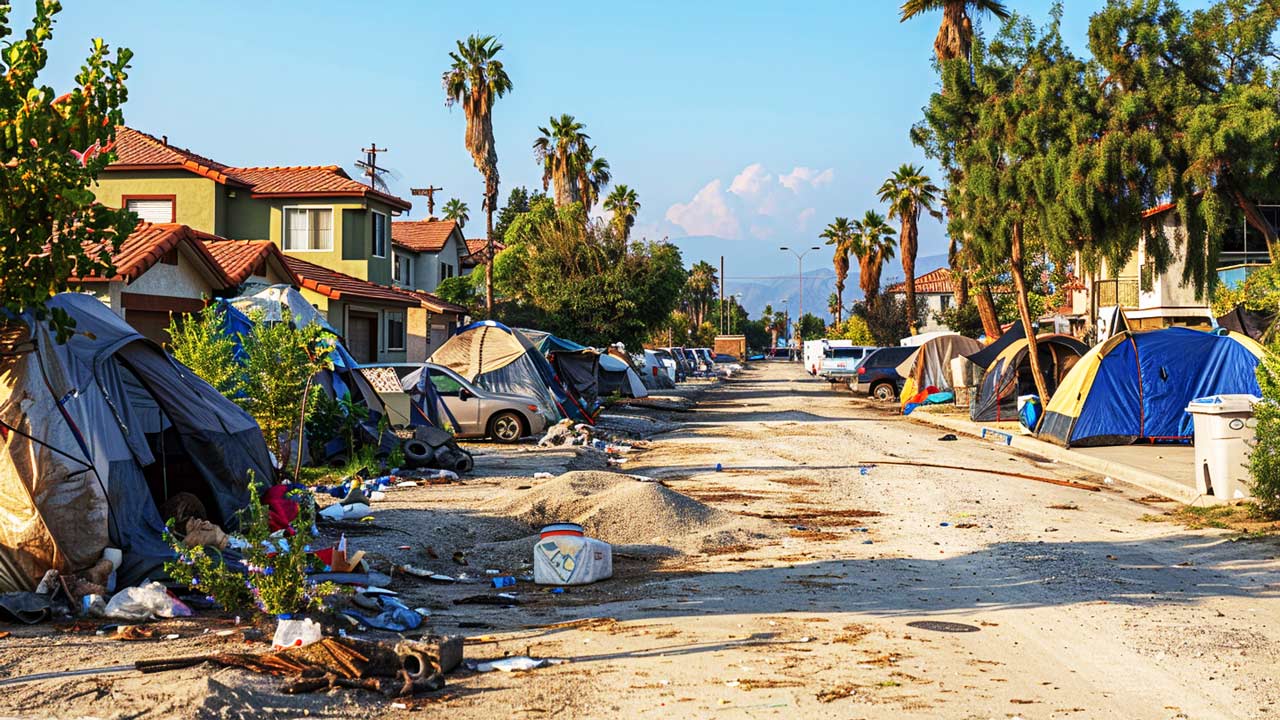What the Baltimore Bridge Disaster Could Mean for the Economy
While the total annihilation of the Francis Scott Key Bridge in Baltimore probably isn’t a “Black Swan” big enough to trigger a global collapse, it adds potent fuel to several fires in an already fragile global economy.
Broad expectations are for most of the economic fallout to remain local to the surrounding area and Mid-Atlantic states, with Maryland alone estimated to lose $1 billion in value from the disaster. Most economists don’t expect national GDP to take any significant hit, despite the local challenges — but as Maryland’s Senate President Bill Ferguson posted to X after the crash of the Dali:
The human cost of lives lost yesterday is overwhelming and tragic. The economic and stability loss to the thousands impacted in the days ahead cannot be understated.
— Bill Ferguson (@SenBillFerg) March 27, 2024
Still, a domino effect across the broader economy isn’t out of the question. After the disaster, Maryland Senator Chris Van Hollen warned the nation:
“There’s no doubt that this will have a significant impact on port operations and have ripple impacts around the country.”
First, there are the supply chain challenges. With Covid supply chain fiascoes still relatively fresh in the national and global memory, a total closure of the Port of Baltimore means that around $80 billion in foreign cargo will have to go elsewhere. Among that cargo includes imported cars, which could push prices up in an already-frothy market.
Automakers on top of the list that will now need to find a different point of entry include Mazda, Mercedes-Benz, Subaru, and Mitsubishi. Here’s the list from Michael McDonough, Chief Economist of Financial Products at Bloomberg LP:
*Updated* I was able to get full access to the database for an even better estimate:
Estimated Value of Auto Imports in March Through Baltimore (By Top Companies) pic.twitter.com/msy89I1wJF
— Michael McDonough (@M_McDonough) March 26, 2024
The port is also the most heavily trafficked artery in the country for farm and construction equipment, dealing a blow to two industries fundamental to economic stability and growth.
The overnight need to divert all those ships to other ports in Virginia, Georgia, New York, New Jersey, and beyond along will cause slowdowns, congestion, and chaos beyond the Mid-Atlantic. While pundits have been quick with reassurances that the issue is a “headache, not a crisis,” the bridge accident creates the conditions for possibly the most significant major supply chain stress test since the government-imposed COVID-19 lockdowns.
According to data from the Federal Reserve Bank of New York, supply chain pressure has settled back close to average since the Covid days, but saw a small uptick of .10 points in February. It will be interesting to see if their data shows a further increase as Maryland races to reopen the port.
Global Supply Chain Pressure Index (GSCPI) — Standard Deviations From Average

Data source(s): Federal Reserve Bank of NY, Bureau of Labor Statistics; Harper Petersen Holding GmbH; Baltic Exchange; IHS Markit; Institute for Supply Management; Haver Analytics; Refinitiv
Time will tell if there’s truly enough space at other ports as far away as the West Coast to absorb all the volume of cars, farm equipment, construction machinery, and other goods and commodities that will need to be sent elsewhere. The disaster also means that tens of thousands of vehicles that crossed the bridge daily will now need to find a new route.
Among them are almost 5,000 freight trucks, some of which carry hazardous materials and aren’t allowed to use Baltimore’s tunnel system. They relied on the bridge as a timely route to reach major distribution centers in the city. The detours that these trucks are now being forced to resort to span up to 30 miles, which will cause congestion and increase delivery costs.
Amazon runs a major logistics hub in Baltimore, and many other companies including Home Depot, FedEx, Under Armour, and McCormick all have a presence there. This will add to existing upward pressure on prices for all kinds of goods. This coming Easter will be one to watch closely, to see how the alternate routes can handle a surge in holiday traffic.
Then there’s coal. Second only to the port in Norfolk, Virginia in terms of its volume of coal exports, the Port of Baltimore will be exporting zero coal until the port can be reopened. With limited options for other ports to make up for the difference, disruptions to the movement of this essential resource, most of which would have been on its way to South Asia, will ripple throughout global supply chains.
Among the most significant common overall denominators will be upward pressure on prices, which is troublesome when inflationary pressures remain a persistent problem. That being the case, there’s one commodity that’s likely to reach higher highs in the wake of the Francis Scott Key Bridge disaster, even after just fetching a new all-time record price:
Gold – history’s favorite yellow metal.





 In 2009, 140 banks failed, and a recent report from financial consulting firm Klaros Group says that hundreds of banks are at risk of going under this year. It’s being billed mostly as a danger for individuals and communities than for the broader economy, but for stressed lenders across America, a string of small bank failures could quite […]
In 2009, 140 banks failed, and a recent report from financial consulting firm Klaros Group says that hundreds of banks are at risk of going under this year. It’s being billed mostly as a danger for individuals and communities than for the broader economy, but for stressed lenders across America, a string of small bank failures could quite […] Cocoa prices have dumped since rocketing to a dramatic peak last month as an El Nino cycle winds down and traders rush out of the illiquid market. For now, depreciating fiat currencies are still keeping the cocoa price still far above its 2023 levels. Coffee has had a similar rise and subsequent correction — but now, inflation and other factors are conspiring to […]
Cocoa prices have dumped since rocketing to a dramatic peak last month as an El Nino cycle winds down and traders rush out of the illiquid market. For now, depreciating fiat currencies are still keeping the cocoa price still far above its 2023 levels. Coffee has had a similar rise and subsequent correction — but now, inflation and other factors are conspiring to […] California’s government bet that they knew better than the free market. And now millions are paying the price. The story begins in 1919, when the city of Berkley, California instituted legislation setting aside districts that would only allow the construction of single-family housing. The idea spread, and soon much of California’s urban areas had adopted the zoning policy. Today, approximately 40% of the total land in Los Angeles is […]
California’s government bet that they knew better than the free market. And now millions are paying the price. The story begins in 1919, when the city of Berkley, California instituted legislation setting aside districts that would only allow the construction of single-family housing. The idea spread, and soon much of California’s urban areas had adopted the zoning policy. Today, approximately 40% of the total land in Los Angeles is […] The yen was once known as a safe-haven currency for investors to protect themselves when broader markets are shaky or other currencies are dropping, but those days are numbered. A stable government and consistent (and low) interest rates have been some of the driving factors, but it’s the unwinding of that ultra-low interest rate policy that will be the yen’s “safe […]
The yen was once known as a safe-haven currency for investors to protect themselves when broader markets are shaky or other currencies are dropping, but those days are numbered. A stable government and consistent (and low) interest rates have been some of the driving factors, but it’s the unwinding of that ultra-low interest rate policy that will be the yen’s “safe […] Whenever an election year rolls around, domestic manufacturing becomes a more central theme of discussion. Candidates from both sides, who seem to disagree on almost everything else, never waver in their commitment to auto manufacturers in Detroit and the steel industry. Republicans and Democrats never forget to remind the American public that they will try […]
Whenever an election year rolls around, domestic manufacturing becomes a more central theme of discussion. Candidates from both sides, who seem to disagree on almost everything else, never waver in their commitment to auto manufacturers in Detroit and the steel industry. Republicans and Democrats never forget to remind the American public that they will try […]